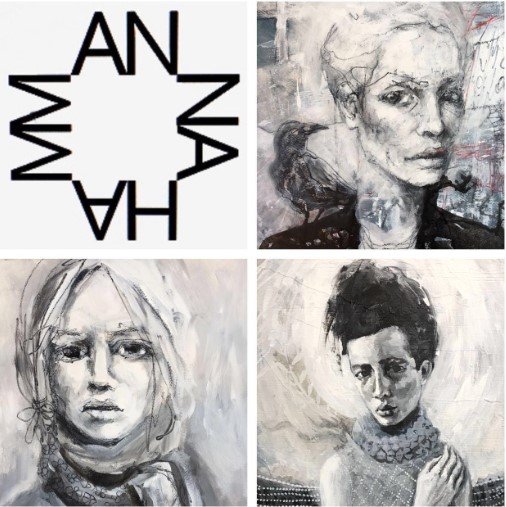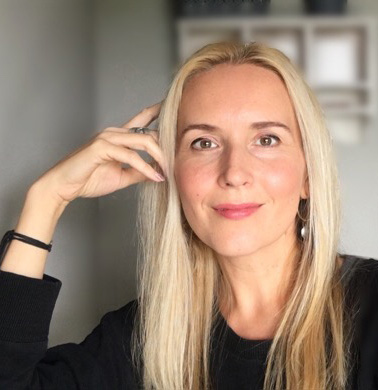This is a very comprehensive list with detailed explanations for students who want to have absolutely everything that I used. However many of these items optional. Optional items have italic font, you can ignore them.
PDF Supply list with photos is here:
Same list without photos typed below:
For drawing:
200 gm paper (rough and smooth), get a pad of smooth and a pad of rough, or large sheets and cut them up. I use Arches, Fabriano, Daler-Rowney and local SA brands, like PrimeArt multimedia pad. I also used couple of 9”x12” handmade watercolor paper, just to experiment during ink demo (it’s optional)
1 sheet thick brown cardboard paper (like inside cornflake boxes) (9”x12”), 1 sheet thick black paper (or illustration board) 9”x12”) – optional, same can be done on white paper
Willow charcoal (optional)
Compressed charcoal
Charcoal pencil (medium or soft)
1 Graphite pencil (6B or 8B)
Black and white soft pastel (I use Rembrandt)
Few colors soft pastels (optional), I used medium green, light peach, light pink and yellow ochre just as an additional touch on one of the demos)
Glue stick
Blending stick (optional)
Pastel/Charcoal Putty Kneaded Eraser
Ordinary eraser
Retractable eraser stick (I use Pentel)
Gold leaf imitation (optional)
Pastel and charcoal spray workable fixative (optional)
Dip ink pen (I use one with sharp fine point, and one with slightly wider, dull point –to make thicker line, second one I used more often)
Fountain pen (looks like dip ink pen, but has replaceable cartridge inside, filled with ink)
Candle for wax resist technique, or couple of kids crayons (white, yellow, I used neon yellow), if you have Neocolor I – they should work as well. We only need 1!
For painting:
Wrapped canvases 12”X16”, 14”x18”, 16”X20”
Canvas board/ panel 12”x16”, 14”x18”, 16”x20”
1 large sheet of 300 g/m rough watercolor paper of any brand (for one of the demos on painting 18 small faces on it)
1 unprimed wooden panel (16”x20” or larger) – optional, you can create same artwork on canvas board, I buy mine at hardware store
300 g/m 140 lbs paper (smooth and rough), paper suitable for mixed-media, acrylics. I use a rough Fabriano watercolor pad 300 g/m 12”x16” (several sheets bound with a wire spiral or glue at one end) and Daler-Rowney rough watercolor pad 300 g/m 9”x12”. I also use Fabriano smooth watercolor block (block contains a number of sheets and is glued on all four sides) 300 g/m 14”x18”. Use any brand, just make sure it’s at least 300 g/m or higher thickness, have few sheets of rough paper and few of smooth. You can also buy large sheets and cut them up. For watercolor/ink demo I use 9”x12” pads with rough (Daler-Rowney) and smooth (Derwent) 300 g/m watercolor paper.
If you can only buy very little paper, get for watercolors 9”X12” rough (cold pressed NOT) 300 g/m – 12-16 pieces pad or block; then get for acrylics 12”x16” smooth (cold pressed) watercolor pad or block. That’s all you need for the course!
Acrylics – heavy body artist quality. Most important items for this course. I use and mix many brands together. If I had to recommend only 1-2 brands: buy Golden or Liquitex. Blick artist quality acrylics are good, but I find that they expire (dry out inside jars) sooner than other brands. Blick will work if you use what you bought within a year.
Colors of acrylics I used: cadmium red light, cadmium red dark, pyrrole red, quinacridone magenta (or alizarin crimson), phthalo blue red shade, ultramarine, cerulean blue, neutral grey value 4 or 5 or 6, naples yellow, cadmium yellow, hansa yellow dark, quinacridone nickel azo gold (or quinacridone gold, or yellow ochre), paynes grey, raw umber, dioxazine purple (or quinacridone violet)
I have still to film few more demonstrations and might add few more colors, but basically what I listed is more than enough.
If you can only buy few, here are the basic ones: pyrrole red, quinacridone magenta (or alizarin crimson), phthalo blue, ultramarine blue, cadmium yellow, quinacridone nickel azo gold (or yellow ochre).
Modelling paste – optional (to prime canvas boards for two of the projects). You can do those projects without modelling paste.
Black acrylic ink
Color acrylic ink (I use Winsor & Newton, in yellow and red) – optional
I also used 3 acrylic inks of local brand Dala: brown, golden brown and sepia, you can buy these colors of any brand, but it was only for 1 demo, watercolor of any colors will work as well.
Watercolors, any brand, I use Cotman, Grumbacher, Winsor & Newton, (in Alizarin Crimson, Payne’s grey, Phthalo blue, Raw sienna) – only 4 colors.
Don’t overspend, we are basically need only black ink and 4-6 waterolor tubes!
You are welcome to use only inks or only watercolors, either will work for my demos, you can use any colors you have available, don’t buy more colors just because I use them.
Small spray bottle for watercolor artists
Small squeegee (to draw clean water in and then dispense into palette to mix watercolors)
Plastic watercolor palette with about 9-12 trays/divisions. I use 1 for black ink (various strength black ink is mixed in every tray, and 1 for watercolors. The reason I use 2 is that one for black ink stains it black permanently.
Brushes, 3 types needed: synthetic brights (rounds) for watercolors, fliberts (flat with roundish corners, and flat square ones with sharp corners (various sizes in all 3 types).
If you cannot afford to buy many, get 3 rounds for watercolors and 3-5 filberts from very large to very small. Flat square ones are optional. I use cheapest brushes on the market.
Gesso primer (optional), I put extra couple of coats of it on already primed wrapped canvas, in one of the demos, just to get smoother surface.
Rubbing alcohol (optional), poured into small spray bottle, I used it to spray into ink washes for special effect, you can buy it at chemist
3 empty plastic ink brush containers (optional), I fill them with inks or preferred color and they provide continuous flow of paint. You don’t have to buy them, watercolor brush dipped into ink works exactly the same. If you are curious – buy one and fill with black ink. They are cheap. This is how they look like (right – in the packaging Pentel Aquash Brush, left – filled with ink):
Foam roller (optional)
Palette knives (at least 3 in conventional shape: large, medium , small)
Oil bars (black and white) (I use Winsor Newton), for 1 demo only, you can skip the demo if you don’t like/ don’t have oil bars. It’s messy, but totally awesome! (You can use Shiva oil paintsticks instead. Oil pastels will not work for this demo, but you can take ordinary oil paint in tubes (black and white) and apply it with palette knife in the same manner- it will work.)
Odourless mineral spirits – to clean hands from oil bars
Color wheel to check on complimentary colors – optional
Wet palette (you can buy it or make it in class: need flat object, like rectangle Tupperware lid, baking paper, toweling paper)
Oil paint (only 1 tube in raw umber!) I will be doing one monochromatic demo in oils.
Sharp tool, to scratch into wet paint, I use porcupine sticks (sold in craft stores), you can use narrow tip of a small plastic brush handle
For drawing and painting:
2 Jars with water: to rinse brushes and to mix clear water into watercolor trays
Few rags to wipe brushes/ hands/ palette knife/ mess
Couple of sponges (mess and special effects)
Scissors
HB pencil
Stabilo All pencils (I use black, red, blue, white), OR get 1 black watersoluble pencil of any brand, 1 black charcoal pencil and 1 white charcoal pencil.
Eraser
Exacto knife (to sharpen pencils)
Ruler (the longer the better)
Sellotape, narrow and wide (to tape paper to table or board on your easel)
Collage pieces/ vintage ephemera: tear off from magazines, wrapping paper, pages from vintage books and music sheets, ledger papers, anything paper related that you can glue on. If you have time, sort it all by colors.
Tear off palette
Toweling paper
Baking paper roll
Acrylic gel medium (or matte medium) to glue collage on
Discarded credit card to move paint around
Spray water bottle (like you use for gardening)
Reference images of faces, black and white and in color, vintage and from magazines (I will provide, but you are welcome to use yours)


